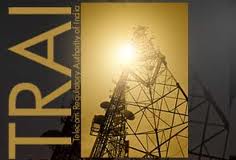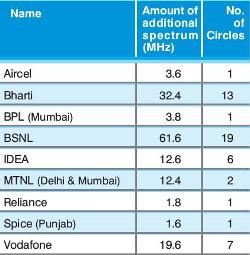 Now debate of spectrum pricing has already been started, where policymakers and industry is already debating the best of way of distributing national’s resource, this blog has often stressed upon the fact that, no way is the best way, unless we understand the basics of economics behind the resources distribution. Do we really understand it? I don’t think so.
Now debate of spectrum pricing has already been started, where policymakers and industry is already debating the best of way of distributing national’s resource, this blog has often stressed upon the fact that, no way is the best way, unless we understand the basics of economics behind the resources distribution. Do we really understand it? I don’t think so.
If TRAI or even Supreme Court of India is really keen on discrimination on distribution of licenses, then why no-one has paid attention to the fact, that there’re nine telecom operators, including state owned BSNL & MTNL, holding 150 MHz of excess 2G spectrum for past decade or even more? Now TRAI has waked up to the call that excess spectrum held by various telcos should also be charged at market prices set earlier. My call is why only excess spectrum is brought to justice? The telcos, who are in safe zone after SC’s cancellation of 122 licenses or in other words, those whose licenses are safe after last week’s SC verdict, let them match the price of total (2G) spectrum they are holding to the market price, which would be discovered in impending 2G spectrum auction.
If you look at how much it would cost to exchequer, then you need to look at current base price of excess 2G spectrum, held by various telcos, communicated by TRAI to DoT in Nov’11 letter at:
That is because TRAI, in its November 11 communication to the DoT, had reiterated that ‘excess’ 2G spectrum held by incumbents beyond the contracted limit of 6.2 MHz should be valued at Rs 4,572 core for every MHz on a pan-India basis.
On an average, this is 1.65 times the 3G-auction price and at this valuation, a pan-India mobile permit, or 6.2 MHz of start-up spectrum, is worth Rs 28,346 crore.
There’re now talks going on, whether telcos should pay the above mentioned market price of excess spectrum, they are holding in their respective circles of operation? The reason being, this price is 1.66 times higher than 3G auction price held last year and if you look at below chart, some of the operators like Bharti Airtel & BSNL are holding excess spectrum for more than half of India region. So it means companies like Bharti & BSNL has to shell out more than Rs 14,000 Cr for excess spectrum for their respective circles of operation. The question is; will they?
This price could be justified on the fact that if operators don’t pay for excess spectrum as per TRAI norms, then they would have to return spectrum. Losing spectrum means losing subscribers and as already known, no operator would like to lose its advantage in current market scenario, where market share does matter when it comes to throwing weight over policymakers and attracting new subscribers.
There’s another point of view. As per KPMG India, setting base price of 2G spectrum too high would deter operators from taking part in auction, fearing the fact that 2G spectrum mightn’t yield return on investments, just because of prospects of more voice revenues.
But in the end, losing spectrum would cost telcos more in coming years, than paying the upfront cost on auction. In India, where TRAI couldn’t regulate the spectrum management without creating more confusion, cost of adding more spectrum would be rising in coming years. So it’s wise to keep what you got at least, irrespective of return fear. Spectrum will always be scarce resource and operators will have to manage in what they got through auction route. If you are serious about this business, you would indeed have to take part, irrespective of market situation.


